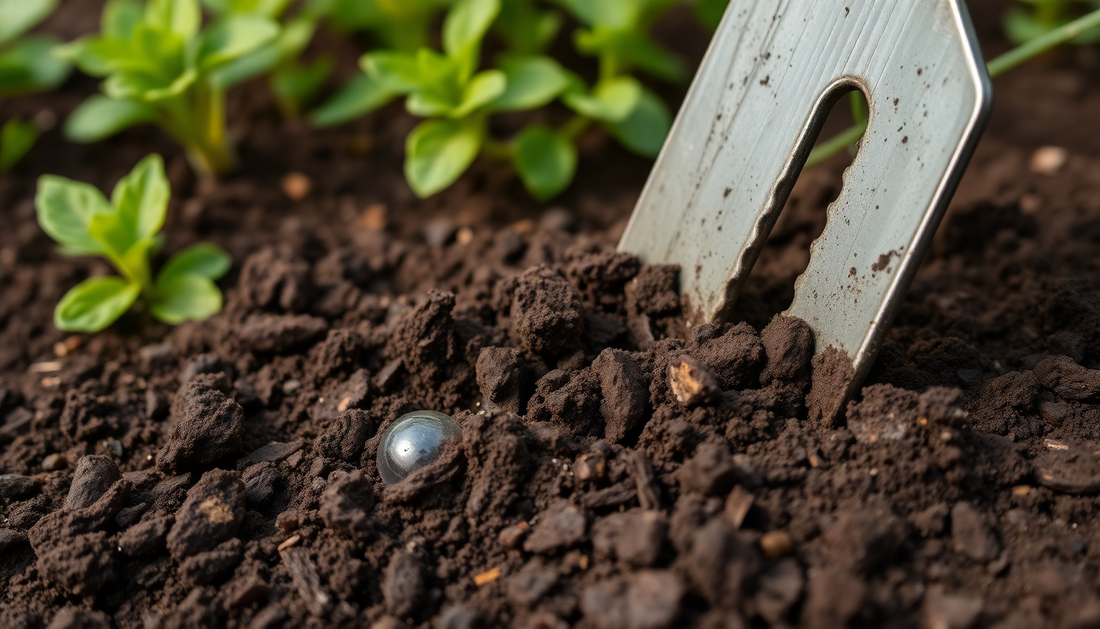
Unlock the Secret to Lush, Thriving Plants: Mastering Soil Aeration
As a passionate gardener, you know that the key to healthy, vibrant plants lies in the soil. One crucial aspect of soil health that is often overlooked is aeration. Proper aeration is essential for your plants to thrive, as it allows for the exchange of air, water, and nutrients. In this comprehensive guide, we'll explore the importance of soil aeration and share practical tips to help you achieve the perfect potting mix for your indoor and outdoor plants.
Understanding the Importance of Soil Aeration
Soil aeration is the process of introducing air pockets into the soil, which allows for the exchange of oxygen, carbon dioxide, and other essential gases. This exchange is crucial for the health and growth of your plants. When soil becomes compacted or dense, it can restrict the flow of air and water, leading to a variety of problems, such as:
- Poor root development: Compacted soil makes it difficult for plant roots to grow and spread, limiting their ability to absorb water and nutrients.
- Waterlogging: Poorly aerated soil can become waterlogged, leading to root rot and other fungal diseases.
- Nutrient deficiencies: Lack of air circulation can prevent the breakdown and release of essential nutrients, starving your plants.
- Stunted growth: Without proper aeration, plants may struggle to thrive, resulting in stunted growth and reduced yields.
By improving soil aeration, you can create an optimal environment for your plants to flourish, allowing them to develop strong root systems, absorb nutrients efficiently, and resist common pests and diseases.
Assessing Your Soil's Aeration Needs
Before you can address soil aeration, it's important to understand the current state of your potting mix or garden soil. Here are a few simple tests you can perform to assess your soil's aeration:
The Squeeze Test
Take a handful of your soil and gently squeeze it. If the soil forms a tight, compact ball that doesn't easily crumble, it's likely that your soil is lacking in aeration.
The Drainage Test
Fill a container with your soil and pour water into it. If the water takes a long time to drain or the soil remains waterlogged, it's a sign that your soil needs better aeration.
The Root Growth Test
Examine the roots of your plants. If they appear stunted, discolored, or have difficulty spreading, it could be an indication of poor soil aeration.
Once you've identified areas where aeration is lacking, you can take steps to improve the texture and structure of your soil.
Enhancing Soil Aeration: Practical Strategies
Improving soil aeration doesn't have to be a daunting task. Here are some effective strategies to help you achieve the perfect potting mix:
Incorporate Lightweight Amendments
Adding lightweight, porous materials to your soil can significantly improve aeration. Some excellent options include:
- Perlite: This volcanic glass material creates air pockets and improves drainage.
- Vermiculite: This mica-based mineral helps to retain moisture while promoting aeration.
- Coco coir: Made from the fibrous husks of coconuts, coco coir is a sustainable and aeration-enhancing addition to your soil.
Aim for a mix of 30-50% of these amendments to create a well-draining, yet moisture-retentive potting mix.
Loosen Compacted Soil
If your soil has become compacted over time, gently loosen it with a garden fork or tiller. This will help to break up dense clumps and create air pockets.
Top-Dress with Compost
Applying a layer of nutrient-rich compost to the surface of your soil can improve aeration and provide a boost of organic matter. As the compost breaks down, it will create a more porous, well-draining soil structure.
Avoid Overwatering
Excessive watering can lead to waterlogged soil, which can suffocate plant roots and inhibit aeration. Be mindful of your watering schedule and adjust it based on your plant's needs and the environmental conditions.
Consider Raised Beds
Raised garden beds can be an excellent solution for improving soil aeration, as they allow for better drainage and root development.
Incorporate Organic Matter
Adding organic materials, such as shredded leaves, bark, or peat moss, can help to improve soil structure and create air pockets.
By implementing these strategies, you'll be well on your way to creating a thriving, aeration-rich environment for your plants to flourish.
Maintaining Optimal Soil Aeration
Achieving the perfect soil aeration is not a one-time task; it requires ongoing maintenance and monitoring. Here are some tips to help you maintain optimal soil aeration:
Regularly Replenish Amendments
Over time, the lightweight amendments you've added to your soil may break down or become compacted. Replenish them as needed to maintain the desired aeration levels.
Avoid Compaction
Be mindful of foot traffic and heavy equipment in your garden, as this can lead to soil compaction. Try to minimize walking on wet soil and consider using stepping stones or mulch to reduce compaction.
Aerate Periodically
Depending on the size of your garden or potted plants, consider aerating the soil every 6-12 months using a garden fork or specialized aeration tool.
Monitor Drainage and Adjust as Needed
Keep an eye on your soil's drainage and be prepared to make adjustments, such as adding more amendments or improving the slope of your raised beds, to ensure optimal aeration.
By following these maintenance tips, you'll ensure that your soil remains well-aerated and your plants continue to thrive.
Conclusion
Mastering soil aeration is a crucial step in creating a thriving garden or healthy indoor plants. By understanding the importance of air circulation in the soil and implementing practical strategies to improve aeration, you'll unlock the secret to lush, vibrant plants that can reach their full potential.
Remember, soil aeration is an ongoing process, and with a little care and attention, you can maintain the perfect growing environment for your plants. So, get ready to unleash the power of aeration and watch your garden or indoor oasis flourish!






No comments